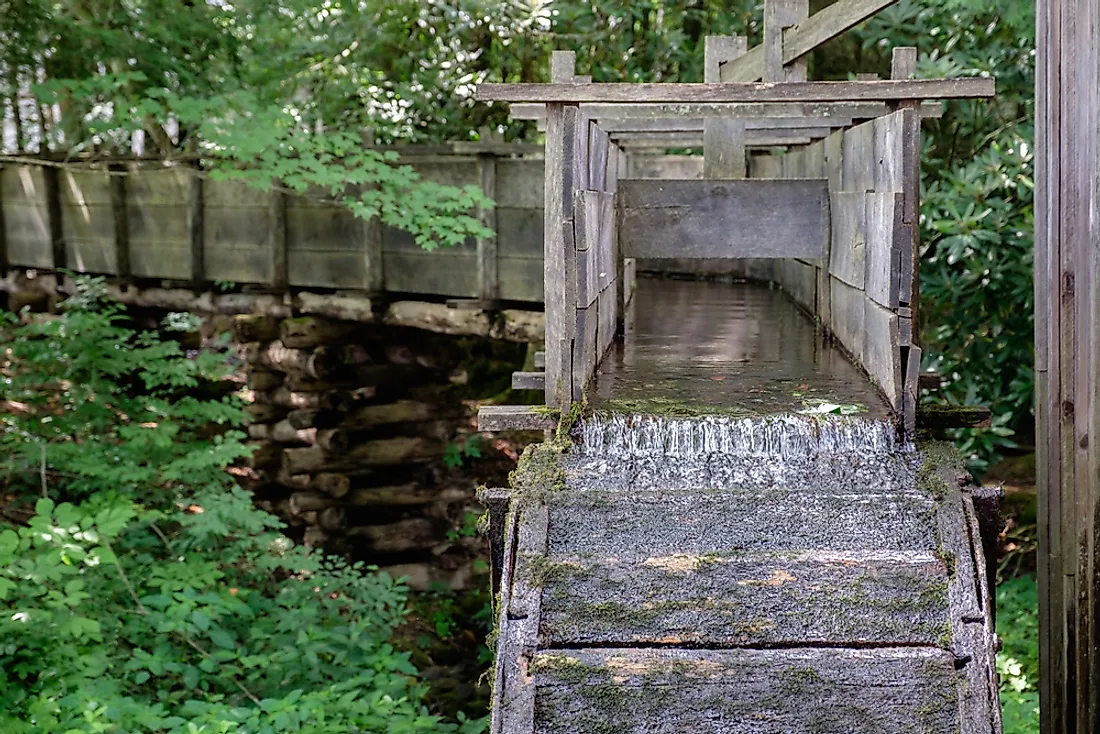What Is A Flume?

A flume is a water channel built as a means of transport but defers from a trench because its walls are elevated above the surrounding ground. Flumes use gravity and the terrain to dictate the direction in which water flows. “Flume” is derived from the Latin word “flumen” that means “river.”
Traditional Applications
Traditionally, flumes were built as part of a millrun, channeling water to turn a water wheel. The flume replaced the older mill pond, which was broader and therefore lacked powerful water current to turn the water wheel. These traditional flumes were wooden troughs, which were elevated using trestles. Flumes were also used to divert water into farms for irrigation. Flumes would also be constructed to aid in the hydraulic mining of gold. Later, the flume was incorporated in the lift lock system of canals, and aided in the transfer of water from the upper part to the lower part of the system.
Modern Applications
In the modern era, flumes have completely different applications. However, the use of flumes in the irrigation of farms has persisted even in the modern era, and operational flumes can be seen in Europe where they transport water from water bodies and into farms.
Electricity and Log Transportation
One use of the modern flume can be seen in the production of hydro-electric power, where the flume is used in the transportation of water from one reservoir to another. Another application of the flume is in the transportation of logs. The use of flumes in log transportation has been so popular, that it is given precedence to other forms of transport. These flumes can run for several miles, transporting logs from forests to sawmills located downhill.
Recreation
Recreational flumes are used for fun activities such as water games. Log rides seen in most amusement parks are examples of recreational flumes, with the logs being propelled by the flow of water. Specialized recreational flumes are used in training professional swimmers, and are customized to have transparent walls to allow coaches to observe and improve on the techniques used by swimmers. By controlling the flow of water, swimmers can experiment with new swimming styles.
Measuring Water Levels
Another use of flumes is in the measurement of water flow in other channels. These types of flumes are known as flow measurement flumes, which are specialized in their construction as is in their application. Acceleration of water inflow measure flumes is achieved through altering the elevation of the floor.
Merits of Flumes
Despite the advent of new forms of transport such as pipelines, flumes are still quite popular around the globe due to the numerous advantages of using flumes. Unlike pipelines that use mechanized pumps, flumes only rely on gravity for propulsion in water transport, which is not only energy efficient but also excellent in the conservation of the environment. Flumes are also cheap to install, as they require few specialized equipment in their installation. Another advantage of flumes is their low maintenance cost relative to other mediums of water transport, due to the ability of flumes to move sediments along with the water, which removes the need to frequently dredge out any settled sediments.











